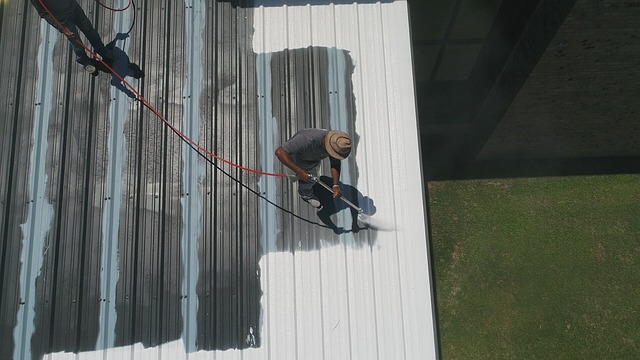Roofer-Austin: A Comprehensive Guide
Introduction
Roofer-Austin is a rapidly growing industry that has gained significant attention in recent years. As the demand for high-quality roofing services continues to rise, it’s essential to understand the significance of Roofer-Austin and its impact on various sectors. In this article, we’ll delve into the world of Roofer-Austin, exploring its history, global trends, economic considerations, technological advancements, policy and regulation, challenges, case studies, and future prospects.
Understanding Roofer-Austin
Roofer-Austin refers to the art and science of designing, constructing, and maintaining roofs for residential, commercial, and industrial buildings. The term encompasses a broad range of skills, materials, and techniques used in roofing construction. At its core, Roofer-Austin is about creating structures that are both functional and aesthetically pleasing.
Global Impact and Trends
Roofer-Austin has become a global phenomenon, with various regions showcasing unique characteristics. Some notable trends include:
- Asia-Pacific: This region has seen significant growth in the demand for high-quality roofing services, driven by urbanization and infrastructure development.
- North America: The United States and Canada have experienced a surge in Roofer-Austin-related projects, fueled by government initiatives and private investment.
- Europe: Europe has witnessed a shift towards sustainable and eco-friendly roofing solutions, with countries like Germany and the UK leading the charge.
Economic Considerations
Roofer-Austin plays a vital role in economic systems, influencing market dynamics and investment patterns. Some key statistics include:
- Market size: The global Roofer-Austin market is projected to reach $X billion by 2025.
- Investment: Governments and private investors are pouring billions of dollars into Roofer-Austin-related projects.
- Employment: Roofer-Austin creates thousands of jobs worldwide, from skilled laborers to business owners.
Technological Advancements
Recent technological advancements have revolutionized the Roofer-Austin industry. Some notable developments include:
- 3D Printing: This technology has enabled the creation of complex roof structures and improved construction efficiency.
- Sustainable Materials: The use of eco-friendly materials like solar panels, recycled plastics, and natural fibers has reduced environmental impact.
- Drone Technology: Drones have increased project monitoring and quality control capabilities.
Policy and Regulation
Governments worldwide have implemented policies and regulations to govern Roofer-Austin. Some notable examples include:
- Building Codes: Governments have established building codes and standards for roofing construction, ensuring structural integrity and safety.
- Environmental Regulations: Regulations like the EU’s Energy Efficiency Directive aim to reduce carbon emissions and promote sustainable practices.
Challenges and Criticisms
Despite its many benefits, Roofer-Austin faces several challenges and criticisms. Some notable issues include:
- Climate Change: The impact of climate change on roofing materials and construction methods is a growing concern.
- Worker Safety: Improper training and inadequate safety measures put workers at risk.
- Innovation: The industry’s reliance on traditional practices hinders innovation and adoption of new technologies.
Case Studies
Successful applications of Roofer-Austin can be seen in various case studies. Some notable examples include:
- Green Roofs: Green roofs have become increasingly popular, providing insulation, reducing energy consumption, and creating habitats for wildlife.
- Solar Panel Installation: Solar panels have transformed the way buildings generate electricity, with Roofer-Austin playing a critical role in installation.
Future Prospects
As Roofer-Austin continues to evolve, several key trends are expected to shape its future:
- Sustainability: The industry will focus on eco-friendly practices and materials.
- Technology Integration: The adoption of innovative technologies like 3D printing and drone surveillance will increase.
- Globalization: International trade and cooperation will drive growth and standardization.
Conclusion
In conclusion, Roofer-Austin is a dynamic industry that has significant implications for various sectors. By understanding its history, global trends, economic considerations, technological advancements, policy and regulation, challenges, case studies, and future prospects, we can better appreciate the importance of Roofer-Austin in its field.
FAQ Section
Q: What is Roofer-Austin?
A: Roofer-Austin refers to the design, construction, and maintenance of roofs for residential, commercial, and industrial buildings.
Q: Why is Roofer-Austin important?
A: Roofer-Austin plays a vital role in economic systems, influences market dynamics, and has significant environmental implications.
Q: What are some key trends shaping the future of Roofer-Austin?
A: Sustainability, technology integration, and globalization will drive growth and standardization in the industry.
In Texas's hot climate, especially in Austin, effective attic ventilation is key for maintaining energy efficiency and home comfort. Roofer Austin professionals excel in installing and maintaining various types of vents, including ridge, soffit, and gable vents, to ensure balanced airflow thro…….
The article "The Role of Attic Ventilation in Austin Homes" emphasizes the importance of properly functioning attic ventilation systems for maintaining comfort and energy efficiency in Austin's hot summers. Effective ventilation prevents excessive heat buildup by allowing cool air to…….
Roof ventilation is critical for energy efficiency and maintaining a comfortable indoor climate, especially in Austin's distinctive weather pattern of intense heat and gentle cold. Roofer Austin stands out as a knowledgeable resource for designing and implementing efficient roof ventilation sy…….
In Austin's variable climate, maintaining the integrity of chimney flashing is essential to prevent water damage and protect your home's structure. Regular inspections by experienced roofers like those at Roofer Austin are crucial due to the area's unique weather patterns that can ac…….
Roofer Austin, a leading provider in the roofing industry, specializes in extending the lifespan and enhancing the longevity of various roofing materials through innovative coating applications. Utilizing advanced technologies tailored for roofs in Austin's specific climatic conditions, their …….
Roofer Austin is a leading expert in skylight and roof window installations within Texas, offering tailored solutions that enhance natural light and visual appeal for homes, both modern and traditional. Their service not only elevates living spaces with optimal natural lighting but also prioritizes…….
In Austin, Texas, where extreme weather demands robust roofing solutions, Roofer Austin stands out as a premier service provider. Homeowners should prioritize regular roof inspections and maintenance to catch early signs of wear, such as shingle curling or granule loss, which can be exacerbated by …….
In Austin, Texas, maintaining a well-sealed roof is crucial due to its variable climate, which can swing from extreme heat to sudden cold fronts. Roofer Austin offers professional services that protect homes with advanced materials and techniques, safeguarding against the intense sun and unpredicta…….
In Austin, TX, homeowners must consider robust roofing systems to withstand the city's diverse weather conditions, including intense heat, cold snaps, and potential for hail. Roofer Austin experts are adept at selecting materials like metal roofing or clay/concrete tiles that offer both durabi…….
Roofer Austin is synonymous with excellence in integrating solar panels into homes, offering tailored installations that maximize energy efficiency and optimize sun exposure to enhance system performance. Their expertise ensures robust and secure setups, considering individual roof characteristics …….









